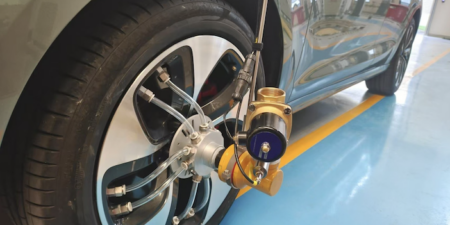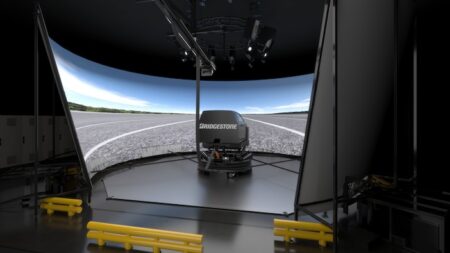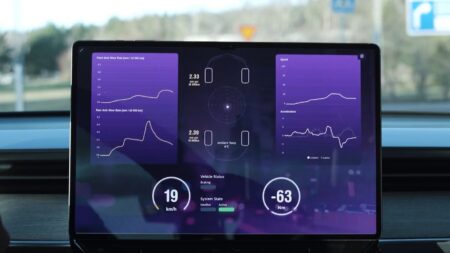Bridgestone is collaborating with Microsoft to develop a monitoring system that can detect tyre damage issues in real-time. These issues are a serious matter, contributing to some 30% of all car accidents caused by technical failure, according to findings by the UK Department for Transport Statistics.
There are four main types of tyre issues: inadequate pressure, fatigue, irregular wear, and damage from kerbs, potholes, or debris on the road. Most of these issues can be reliably mitigated against by TPMS, which helps motorists avoid low-pressure problems, while regular services and replacing tyres in good time helps guard against wear and fatigue. The exception is tyre damage, which often cannot be detected without close, manual inspection, and which can potentially occur at any time.
However, Bridgestone says that its Tyre Damage Monitoring System delivers real-time awareness of damage. It uses the Microsoft Connected Vehicle Platform (MCVP) cloud framework together with existing sensor data, from hardware that is already installed on vehicles, and uses algorithms to detect events affecting the tyre surface and carcass. The driver can then be immediately notified of any hazard and act accordingly. According to Bridgestone there is currently no other equivalent monitoring system available in the market, and alternative systems would require the installation of addition hardware.
The tyre damage monitoring system detects when damage has occurred, and also where. This capability allows broader insight into road conditions and infrastructure, which can be used to alert the agencies responsible for road damage issues to the presence and location of potholes and other hazards. Future autonomous vehicles could also benefit from the system, with vehicles passing information about local hazards to others in the vicinity, as well as cloud data stores.
The Tyre Damage Monitoring System is available to all vehicle fleets and OEMs that use MCVP. The partnership with Microsoft also enables Bridgestone to further develop its solution to meet the requirements of fleet operators and OEM partners.
A digital partnership
MCVP works by providing a single consistent, cloud-connected, horizontal platform across digital scenarios, upon which customer-facing solutions can be built, including in-vehicle infotainment, advanced navigation, autonomous driving, telematics and prediction services, as well as over-the-air updates (OTA). As MCVP works on theMicrosoft Azure platform, it includes enterprise-grade global availability.
MCVP will provide Bridgestone with a digital infrastructure that will accelerate its delivery of connected mobility solutions, providing access to several Microsoft Azure cloud, AI, and IoT capabilities. In turn, working with Bridgestone helps Microsoft grow its ecosystem of supporting partners, and enables MCVP’s customers to integrate these partner’s solutions into their own offerings.





